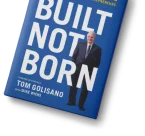SEO CONTENT WRITING: Your Secret Weapon to Grab a Spot in Google’s Page 1 Results
You must have surely heard of Search Engine Optimization (SEO). Even if you haven’t, a quick Google search will throw hundreds of articles about it at you. However, a mere understanding that SEO is the method of refining the quality and quantity of traffic to a website or a web page from search engines will not help you resolve your queries about your business or website. You might be curious how you can utilize SEO to assist your company in generating more traffic, contacts, and eventually good sales and profits. The secret weapon here is SEO content writing. This guide will concentrate on SEO content writing and its various aspects.
Let’s understand what exactly SEO content writing means.
SEO writing is nothing but writing and refining content with the main motive of ranking higher in search engines. The usage of keywords and key phrases in the content is crucial for SEO content writing. To improve the organic visibility and increase the SERP ranks of their websites, expert writers prudently use SEO. The best method for SEO writing is merging high-quality content with relevant keywords and phrases (long-tail keywords). The writer should not just focus on ranking the products or services at the top in the search engine but also needs to have other objectives to be fulfilled.
Here are some tips for writing SE-optimized content:
- Create content for your audience – A crucial factor qualifies this as the first tip. The title is self-explanatory, yet most companies/brands create content that is not tailored for their audience. Write content that the target audience can relate to and address their pain points. The content must be related to your sector or industry and not always about the products or services. To beat your competitors, you need to write SE-optimized, entertaining, and informative articles to establish yourself.
- Create powerful headlines – So you’ve got a handful of content pieces to create a significant impression. The best way to get maximum eyeballs is not to overlook the value of a good title! Use rich keywords in your headlines and make them precise and attractive. Ensure that your meta descriptions are captivating and summarize the content of the concerning blog post. An important thing to remember is that your meta description and title will display in search results. Hence, be creative.
- Use keyword-rich phrases – Include relevant phrases that are also abundant with keywords in your titles and headlines and all through your blog. However, be aware that using too many keywords may affect readability and result in penalties from search engines. Use keywords strategically and do not force them into your content to sound genuine. Use blog tags to tag some appropriate keywords for every article.
- Organize your posts – Even excellent articles will get quickly buried in a sea of Google search results if they are unstructured. To provide your readers with a good read that makes them hooked, divide your content into small paragraphs and make them digestible. Another crucial aspect of search engines is back-end management. Using the correct tag sequence when tagging headlines will help you maintain structure.
- Take advantage of social media to publicize your content – Social media may enhance the reach of your works and encourage sharing. Use compelling descriptions and relevant call-to-action on social media to market every piece of content. Social media plays a vital role in improving the visibility of your content. Hence, it’s crucial to include share buttons in each blog post.
- Encourage natural link development — Link-building is not a fad but a standard in the SEO world. Links remain a key performance constituent for SEO. If another site picks up your content, include links to your posts or website. Adding a shortcode to your site for various forms of information, such as graphics and videos, helps your content’s shareability while also adding a connection to return to the source. Aim for quality while creating SE-optimized content since it increases visibility and the possibility of other websites linking to it.
- Track your progress – Tracking your progress can help you keep track of search engine-friendly content. Google Analytics is one of the best and easy-to-use tools to track your unique visitors and typical time spent on each page. To understand how people engage with your content after landing on it, look at factors like the time spent on site and bounce rate. If you find a substantial drop in traffic combined with a high bounce rate, it depicts that your material isn’t fascinating or, even worse, that you made your visitors bark up the wrong tree. To get a sense of how popular your material is, check the number of social interactions.
Simply looking at these factors may give you a good idea of which content pieces are popular and approved, allowing you to recreate that type of content in the future. Because both SEO and content production are important pieces of the puzzle, it’s crucial to apply high-quality methods to guarantee more traffic and engagement on your site.
How To Make Keywords Work for You
The SEO industry has always remained a dynamic one. The material was rated and provided to users in the early days of the internet by repeating the same keywords several times as possible. Keyword density/stuffing was the term used to characterize this. However, Google’s algorithms have evolved over the years, and they now recognize that keyword-stuffing is spammy and ineffective for users. As a result, copywriters need to adjust their game plan. To put it in a nutshell, write for the final users, not search engines.
The advice implies that each page should focus on a particular keyword. Writers should cover every element and perspective of the issue and its subtopics.
Consider the future: What are some possible follow-up inquiries a reader could have after reading your work? Include the resolutions to those queries immediately at the start of your text. The goal is to be the stand-alone think tank of a topic, giving readers the best bang for their buck. Keywords aren’t required in every sentence. They will organically find their way into the content if you’re doing your job right.
How Long Does It Take to Complete the Task
According to many industry surveys and several trials, content maturation takes at least 100 days. The term “mature” refers to the time Google takes to rank your website in the SERPs decisively. Your ranking will fluctuate a lot in these 100 days, and every day is nothing short of an “every dog has its day” kinda one. You may appear on Page 1 on the first day; the next day, you may be a total failure.
Those 100 days are just Google’s way of telling you, “We are Considering Your Application.” If your material touches the benchmark the search engine giant has set in the 100 days, it will likely stay on the top. We advise you not to base all of your decisions or key performance indicators (KPIs) on temporary SEO results. If you want to see favorable outcomes from your content, just keep ‘em coming.































